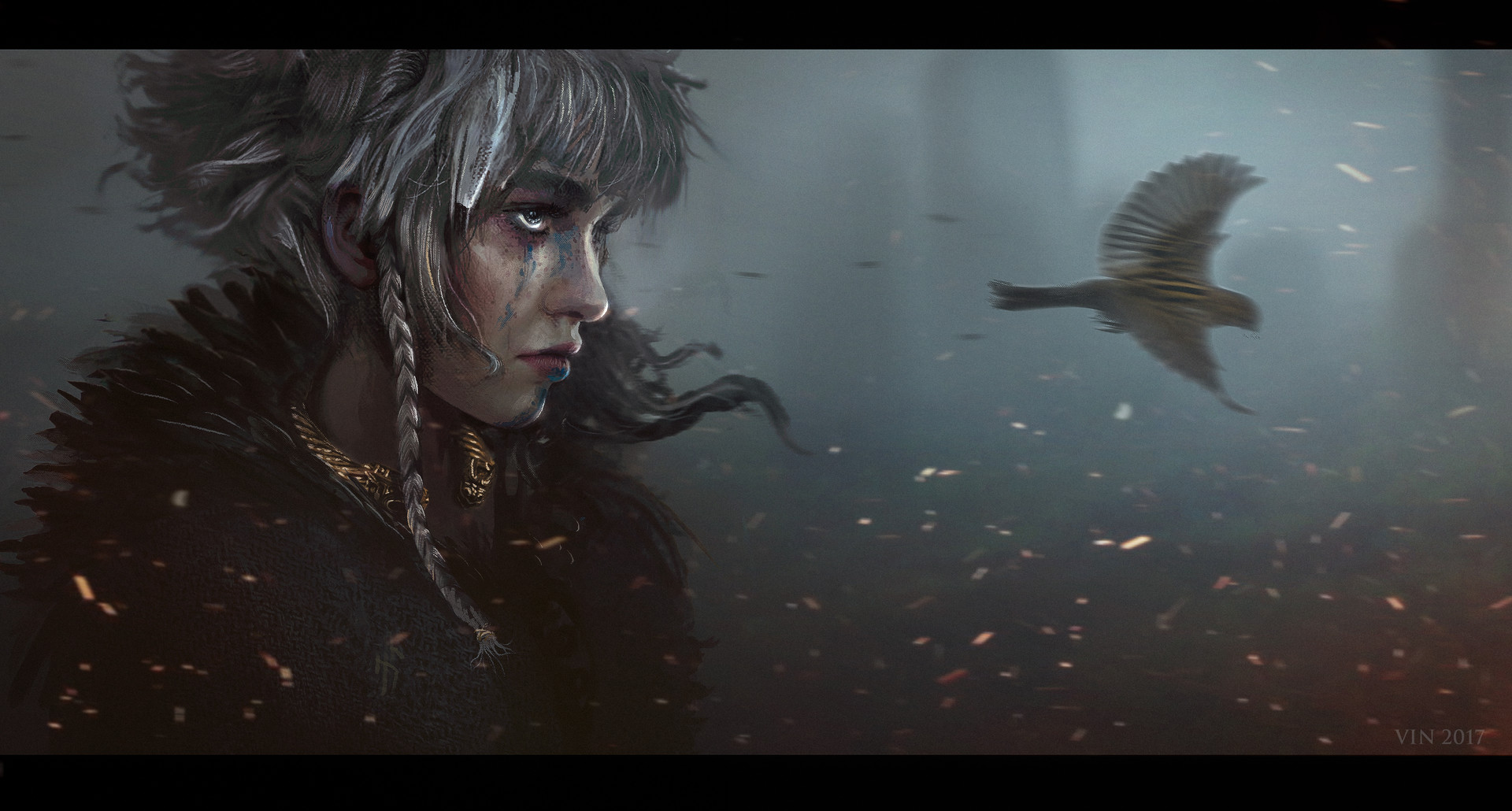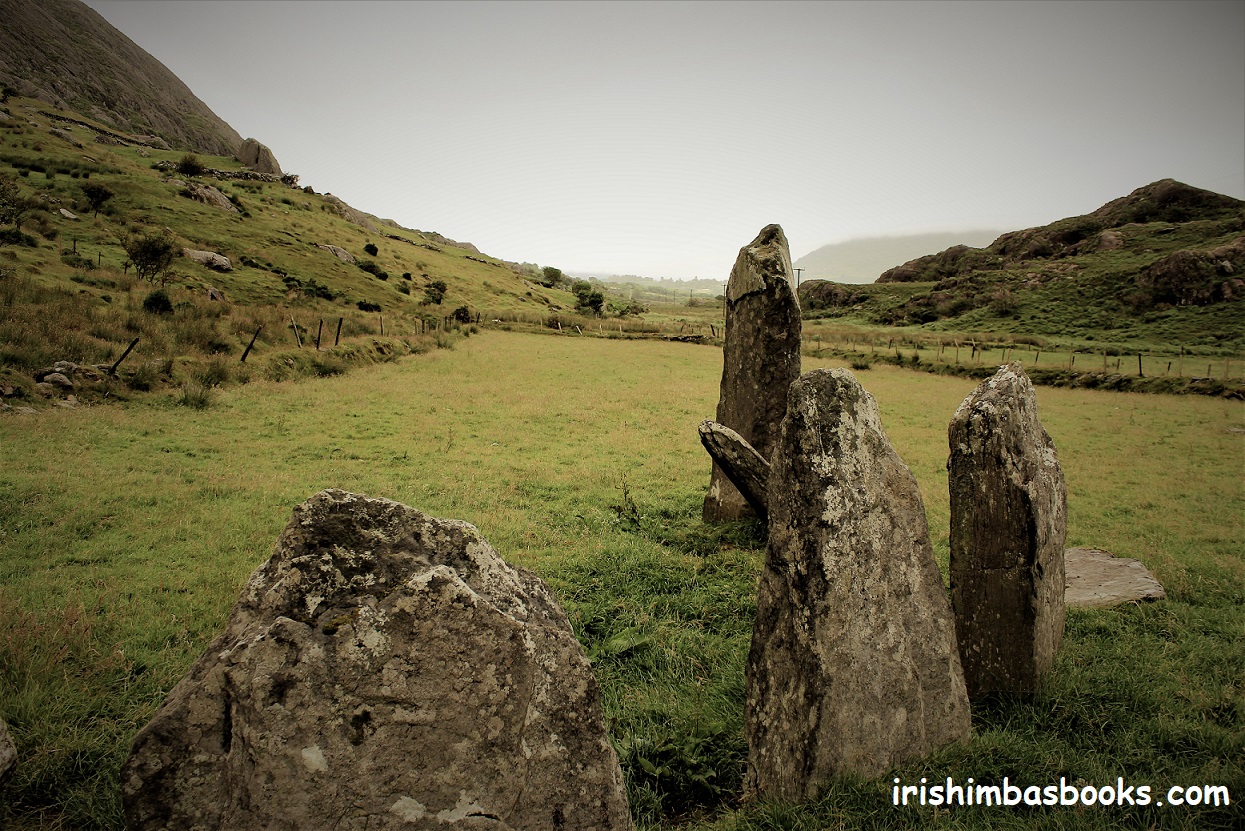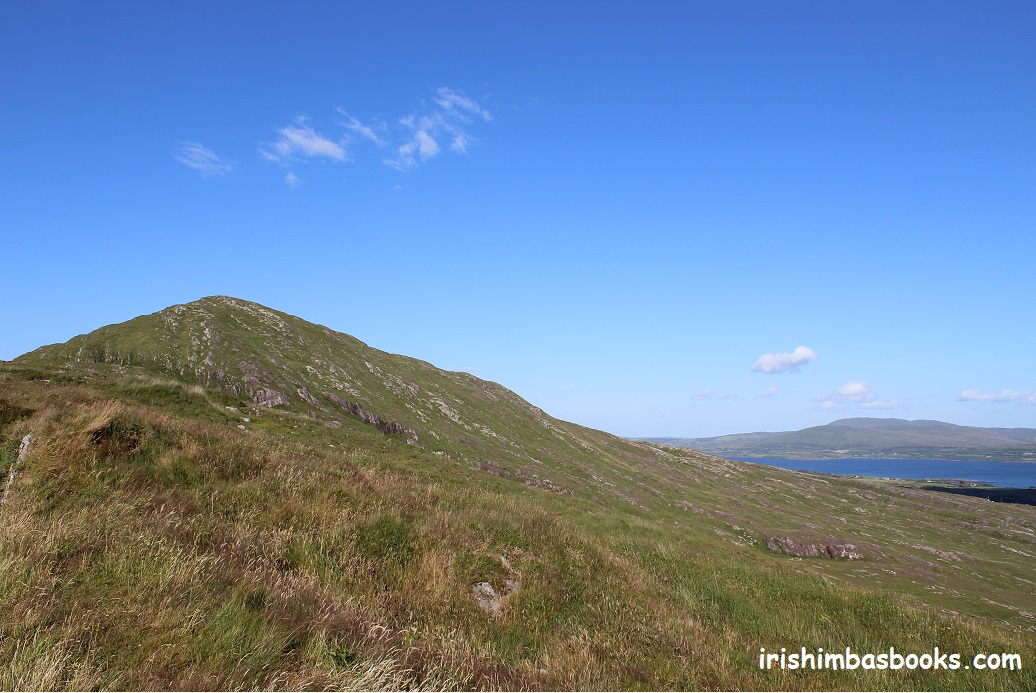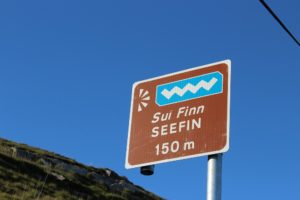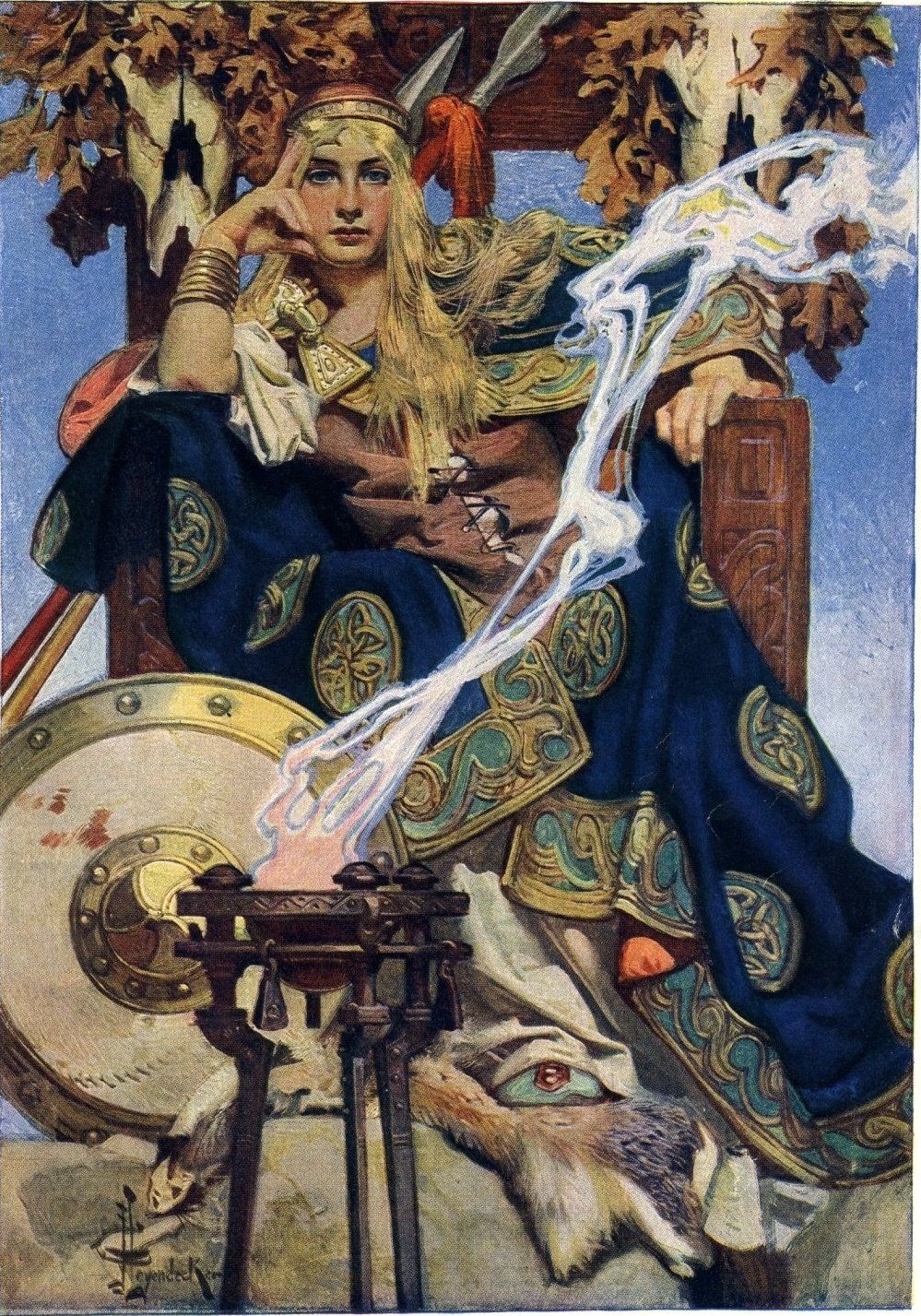
Irish people used to be in the unique, if somewhat unenviable, position of having our cultural mythology and history (in particular, our prehistory) regularly misrepresented in narratives by overseas entertainment interests. Fortunately, the recent shift to plundering Scandinavian culture means that, in that respect at least, we now have some company.
It’s an interesting phenomenon but whatever story-telling entertainment medium you look at (literary, film, television, etc.), you’ll inevitably find Irish (Oirish) prehistory portrayed in there somewhere, usually inaccurately and out of context, despite the creators’ best intentions. One story-telling sector where Irish mythology/prehistory hasn’t been so poorly represented, however, is the graphic storytelling industry (comics/graphic novels/animation).
As an industry, commercially produced graphic narratives are a relatively recent innovation, commencing as an art form with comics sometime in the late 1950s. Initially sneered at as an amusement for children (which, admittedly, they did target), nowadays graphic narratives are very much an adult-targeted, multi-billion-dollar industry. Stories told in a complex melding of visual and narrative forms, when done correctly, they have the emotional punch and intellectual grunt to equal any other form of storytelling.
Historically, most of the English-speaking graphic narrative market has always been dominated by American companies, in particular the two publishing behemoths; Marvel and D.C. As a result, between the fifties and the nineties, when Irish culture or Irish stories were portrayed in this format, it was often as a means to add colour or exoticism to existing American storylines (i.e. Irish culture was incorporated into other countries’ stories as opposed to having Irish stories being produced by Irish creators). This occasionally led to some amusing unintentional cultural gaffes such as:
- The Gay Ghost (seriously!) – a fictional Irish superhero from DC (this involves a dead Irishman whose spirit form remains in his castle until 1941 when he ends up fighting Nazis while saving his ex (and no, I’m not making this up),
- Banshee – An X-Man from Marvel, he has a power called a “sonic scream” (if you haven’t worked out why this is screamingly wrong, here’s a hint: “bean sí”)
- Jack O’Lantern – An Irish fairy (FFS!) provides a man with a magic lantern that holds a whole range of different powers (Clearly, Jack is related to the O’Lanterns of West Donegal!)

The graphic storytelling industry has changed dramatically over the last twenty years or so, mainly as a result of new technology that allows artist/writers to distribute their work far more widely and through a broader range of media. In the past, graphic stories could only be distributed through printed paper in the form of comic strips, comic books or individual graphic novels (and, much more rarely, in animation). Nowadays, creators can distribute their stories through a wider range of receivers outside of paper (computers/e-readers/ipads etc. but also through their own websites and internet services such as Youtube, etc.).
Graphic Novels in Ireland
Ireland has its own share of graphic story creators of course but the native industry is very small by international standards. In the past, most of the graphic stories in Ireland were produced by individuals who laboriously published, printed and distributed their own work or who somehow managed to achieve that holy grail of achievement, publication by a national publisher. Other Irish creators, taking a different path, ended up working for overseas companies as illustrators or writers.
So what kind of Irish mythology/prehistory content does the graphic story-telling industry produce?
Mythology is a prehistoric framework of cultural beliefs that often contains elements of what most contemporary audiences would think of as ‘fantasy’ or ‘make believe’. This is the reason so many people mistakenly believe that mythology and fantasy are the same thing. Graphic creators, meanwhile, driven by ambition and ability to push the boundaries, often end up creating spectacular visual works of exotic grandeur and dramatic interpretation that work very well in the fantasy genre.
This draw towards fantasy means that it’s almost a natural progression for an artist of Irish background (or for those with an interest in Irish mythology) to portray those stories in graphic style.
This is also the reason, so many graphic creators have tended to focus on tales from An Lebor Gabála Érenn and, in particular tales from the Ulster Cycle (that body of Irish mythological stories with the most fantastical elements). Generally speaking, it’s only native Irish creators who delve beyond these more well-known and well-hashed tales.

The Most Successful Representations of Irish Mythology/Prehistory
The following are probably the most famous (and most successful) representations of Irish mythology/prehistory that I’m aware of to date. No doubt, there are several that I’ve missed so feel free to correct me at info@irishimbas.com with any omissions.
Nuada of the Silver Arm (1974-1975)
Irish artist, Jim Fitzpatrick, first came to major public attention with his series Nuada of the Silver Arm, which was published in the Sunday Independent from 1974 to 1975 and featured his trademark intricate scrollwork/knotwork and fantasy-style influences. The series concerns the adventures of a character called Nuada (a Conan the Barbarian styled version of Nuada Airgetlám (Nuada Airgetlám was actually the mythological leader of the Tuatha de Danann, a character that Guillermo del Toro subsequently turned into an elf [WTF!!!?] in the film Hell Boy II). During Nuada of the Silver Arm’s run, many people complained about the strip’s fantasy style violence and scantily-clad women (this was 1970’s Ireland, remember) and it was eventually cancelled.

Fitzpatrick’s Nuada of the Silver Arm
The Book of Conquest (1978)
Undaunted, Fitzpatrick subsequently went on to publish The Book of Conquest in 1978. This wasn’t a typical graphic novel for the time but its dramatic illustrations and glorious use of colour meant it was a major inspiration for any subsequent graphic representation of prehistoric Ireland from that point forward.
Sláine (1983 – onwards)
Created by British writer Pat Mills, Sláine was one of the titles published in the ground-breaking British comic, 2000 AD. This series (running in different forms from the eighties up to a few years ago) concerns the adventures of an Irish warrior called Sláine mac Roth. Like Fitzpatrick’s Nuadu, this series is very much a mish-mash of Conan the Barbarian-style fantasy and the more fantastical elements of An Lebor Gabála Érenn. A kind of prehistory anti-hero, Sláine is directly modelled on the mythological hero Cú Chulainn in that he has a spear called An Gae Bolga and the unfortunate habit of breaking into An ríastrad (a berserker-like combat frenzy) during battle. Sláine is probably one of the longest enduring graphic representations of Irish mythology/prehistory and although the core story remains consistent, the visual representation varies dramatically depending on the artist used.

Cló Mhaigh Eo Comics (1999 to present)
Colmán Ó Raghallaigh, an award-winning Irish author was the first person to produce and publish a graphic novel in Ireland (through his own publishing house, Cló Mhaigh Eo). An Sclábhaí/ The Slave – told the story of a young St. Patrick and won several awards but Ó Raghallaigh subsequently followed that up with a number of other gorgeous graphic novel adaptations of Irish mythology (in Irish) that included:
- An Tóraíocht/ The Pursuit(2002) – An adaptation of Tóraíocht Dhiarmada agus Ghráinne Fionn mac Cumhaill chases his intended bride Gráinne, who’s eloped with the warrior Diarmaid ua Duibhne.
- An Táin (2006) – An adaptation of the 10th century epic Táin Bó Cúailnge/The Cattle Raid of Cooley.
- Deirdre agus Mic Uisnigh/ Deirdre and the sons of Uisnech (2009) – An adaptation of the famous tragedy involving Deirdre and Naoise. It’s a prequel to An Táin Bó Cúailnge.
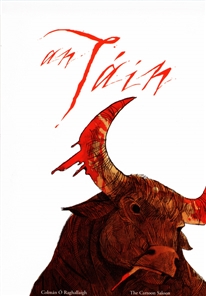
The Táin Bó Cúailnge, unsurprisingly, also turns up in a number of other innovative graphic stories, all offering very different renditions of the epic tale.
The Cattle Raid of Cooley (2008-2015)
Belfast illustrator Paddy Brown serialised his epic webcomic The Cattle Raid of Cooley on his own website from 2008 to 2015 (winning Best Irish Webcomic in 2011) and it really is an exceptional feat. Brown’s version of the story is realistic, extremely well researched and avoids all the fantasy clichés by focussing on the characters and their motivations, effectively capturing the violent reality of inter-tribal warfare and feuds.
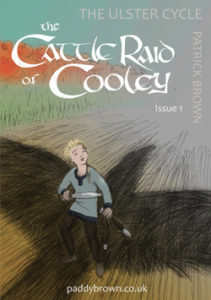
About a Bull (2011-2012)
M.K. Reed’s webcomic About a Bull took a much more ‘cartoon’ approach to An Táin, through the use of more simplistic drawings, bright watercolors and humour. Although she tells the same story that many others have done before her, she does so from the perspective of Meabh Leathdearg (usually portrayed as the villainess of the piece). Her version cleverly incorporates the remscéla (the side stories or set-up stories to the core narrative) through the use of guest artists who offer a very different visual interpretation. Stylistically, this creates a somewhat inconsistent approach to the story that could be considered jarring, however, in the context, it’s effective. Sadly, the online story stopped in 2012 and doesn’t seem to have continued since.

The Legend of Cú Chulainn (2013)
Cork artist Will Sliney’s The Legend of Cú Chulainn was a graphic novel published by The O’Brien Press in 2013 and it remained high in the Irish Times bestseller list for a time. For his adaptation, Sliney used a very “heroic-fantasy” style and also changed a few core elements of the story such as the character of Meadhbh Leathdearg. Sliney’s illustrations display the influence of working for American comics but there’s no denying his storytelling talent.

The League of Volunteers (2011 -)
This one scrapes in as there’s limited representation of Irish mythology and prehistory and most of the story is set in 20th century Dublin. Nevertheless, it deserves inclusion. Written by Rob Curley and drawn by Barry Keegan, The League Of Volunteers is set during the Irish Emergency (the period just after Ireland became a Republic) and concerns a group of contemporary and mythological Irish heroes assembled by De Valera to protect the country against the threat of Nazi enemies (and a demon called Bocanach). The Volunteers include ‘The Glimmerman’ (an anti-Nazi street fighter), a human/demon called Blood Rose, Fionn mac Cumhaill, Lúgh Lamhfada from the Tuatha Dé Danann etc. etc.

This series is very much based on the American comic staple of superhero team ups (where a team of superheroes join forces to confront some great challenge) along the lines of The Avengers or Alan Moore’s ‘League of Extraordinary Gentlemen’, but then twists that model and adapts it to an Irish setting. In that regard, you’ve really got to admire its sheer ballsiness and ambition.
Finn & Fish (2010 – 2014)
Irish artist/writer Leann Hamilton is one of the few people in the Irish graphic storytelling industry (with the possible exception of Ó Raghallaigh and Curley) to venture into mythological ground outside the well-trampled stories of the An Lebor Gabála Érenn and The Ulster Cycle (in this case, delving into the Fenian stories instead). Initially self-published by Hamilton in 2010, Finn and Fish is a contemporary and more humorous retelling of the old Salmon of Knowledge tale. It won several awards in 2013 and 2014.

The Secret of Kells (2009) and Song of the Sea (2014)
The Cartoon Saloon is an Irish animation film and television studio based in Kilkenny which has been producing short films, cartoon series and other services since it was first set up by Paul Young, Tomm Moore and Nora Twomey in 1999. It’s probably best known however, for the beautifully animated feature films, the Secret of Kells and Song of the Sea, both of which incorporate strong elements of Irish mythology and history with innovative design and storytelling.
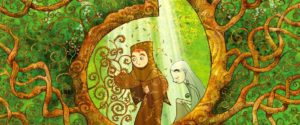
Cú/Hound (2014 – 2019)
Cú/Hound – Protector/Liberator /Defender are a trilogy of graphic novels created and drawn by Paul Bolger and co-written by Barry Devlin. One could yawn and say this is just another adaptation of the Ulster Cycle/Cú Chulainn, but what sets Cú apart from its predecessors is the sheer scale of ambition in terms of the artistry and the fact that it’s development was funded directly (through Kickstarter). Cú/Hound – Protector, the first in the series focuses on Cú Chulainn’s childhood and his travels to Skye to train with the woman warrior, Scatach. All three novels are beautifully illustrated in black and white but make dramatic use of red on occasion. Cú is also an excellent example of how much graphic storytelling has changed over the years in that the writers are also attempting to crowdfund for a movie version of the original graphic novels.

Conclusion:
Given the above examples, it does seems as though Irish mythological and prehistory stories are more effectively represented in the graphic storytelling sector and it’s easy to see why. Mythological stories lend themselves extremely well to transmission through graphic media.
In addition, with recent technology, innovative Irish graphic creators are obtaining greater independent access to markets through their own webcomics, website sales or crowd funding. By consequence, this has also led to far more Irish creators producing their own adaptations of Irish mythological stories, thereby avoiding the fantasy excesses that occasionally result when such stories are told by people who aren’t genuinely familiar with Irish culture.
Either way, it continues to be an innovative and exciting sector to watch.
Note: If there are any Irish graphic creators of Irish mythology and prehistory-related stories out there who’d like some reviews/exposure through Irish Imbas please feel free to email us at info@irishimbas.com. We’d be happy to help where we can.


















